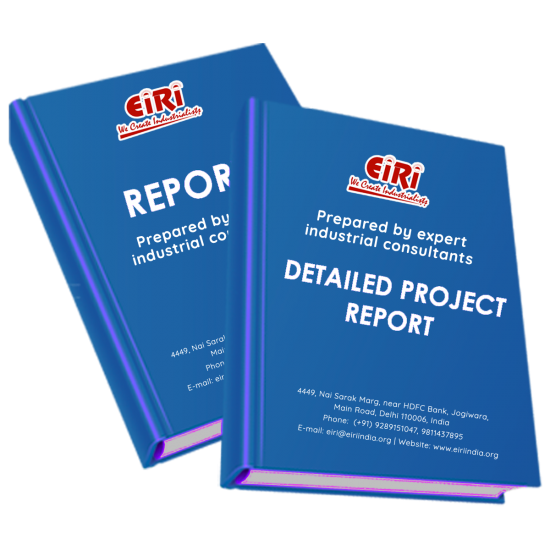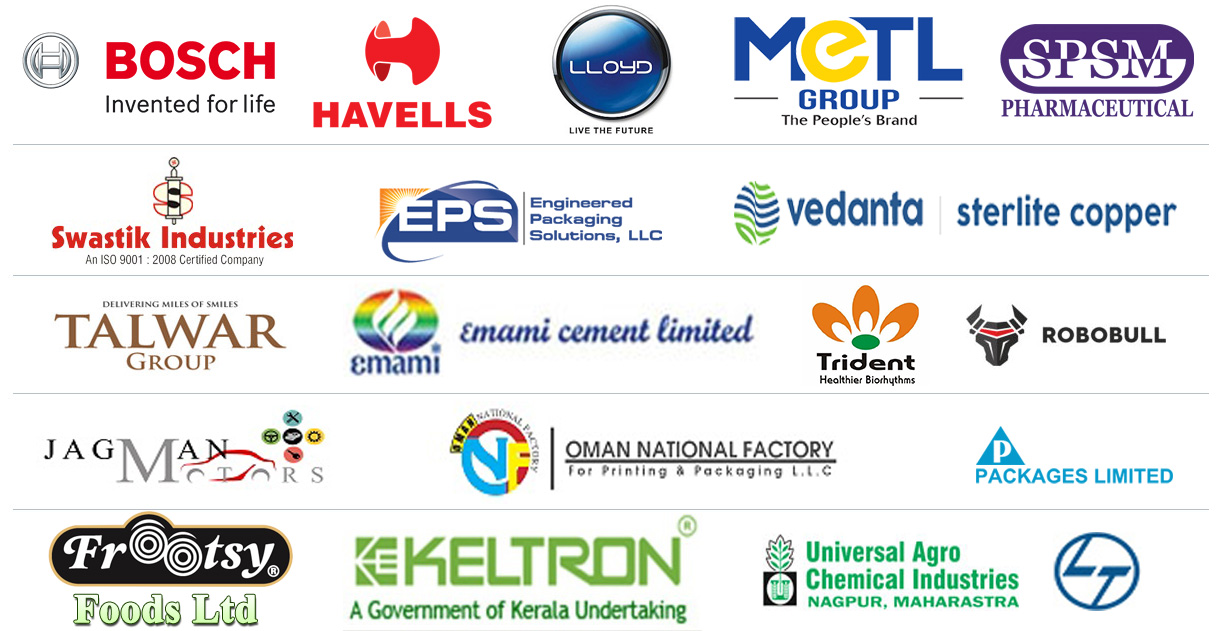Detailed Project Report on maize processing plant (wet milling) corn oil, corn syrup, hfcs dextrin, malto dextrin, corn starch, liquid glucose etc. cap: 300 ton/day input

- More than 40 years of experience
- Managed by expert industrial consultants
- ISO 9001-2015 Certified
- Registered under MSME, UAM No: DL01E0012000
- 24/5 Research Support
Get your quesries resolved from an industry expert. Ask your queries before report or book purchase. - Custom Research Service
Speak to the our consultant to design an exclusive study to serve your research needs. - Quality Assurance
All reports are prepared by highly qualified consultants & verified by a panel of experts. - Information Security
Your personal & confidential information is safe & secure.
MAIZE PROCESSING PLANT
(WET MILLING) CORN OIL, CORN SYRUP,
HFCS DEXTRIN, MALTO DEXTRIN, CORN STARCH, LIQUID GLUCOSE ETC. CAP: 300 TON/DAY INPUT
[CODE NO.3485]
Starch Industry in India
Starch is an abundant carbohydrate distributed worldwide in plants. Starch has been a major ingredient in man's diet over the centuries. In addition it has become a major industrial raw material. Plant seeds, roots and tubers are all sources of industrial starch production. The commercial realities of the starch recovery process limit the industrial sources mainly to wheat, maize and tapioca. Indian starch industry mainly consumes maize as input raw material.
Also some industries are tapioca based.
Maize is doing wonderful things in our everyday life. Maize is present in one form or other in
The Food we eat
The Milk we drink
The Chocolates/Biscuits we take
The Clothes we wear
The Paper we read
The Medicines we take
Maize (Corn) contains about 70% starch, other components being protein, fibers and fat. The basis of the maize milling process is the separation of the maize kernel into its different parts. Maize starch is produced by the wet milling process, which involves grinding of softened maize and separation of corn oil seeds (germs), gluten (proteins), fibers (husk) and finally pure starch.
Byproducts from Maize
The byproducts from maize based industries find various applications:
i. Maize (Corn) Steep Liquor : It contains amino acids, proteins and are used by antibiotics drugs manufacturers. Also it is a large source of biogas, which is being used as fuel for driers, boilers etc.
ii. Maize Gum : Corn Oil is produced by expelling oil from the germs. Corn Oil finds applications in food and other chemical industries. Maize oil cake obtained after expelling oil is used as cattle and poultry feeds.
iii. Maize Gluten : Maize Gluten contains high protein content and it is used as cattle and poultry feeds.
iv. Maize Husk : It contains starch, protein and fat as minor components and mainly consumed as cattle feed.
1.0 Starches
Starch is a group of polysacchrides, composed of glucopyranose units joined together by-glucosidric linkages. It conforms to the molecular formula, (C6-H10O5)u, where n varies from a few hundred to over one million. Starch is found as the reserve carbohydrate in various parts of plants and is enzymatically broken down to glucose to other carbohydrates according to the metabolic needs of the plants.
Industrially, starch is broadly divided into two types viz, natural and modified. Natural starches, also designated as unmodified starches or simply starches, are obtained from grains such as and sorghum. from roots like potato, tapioca and arrow root, and from the pith of the stems of certain palms such a sago. They are further classified into cereal starches and root starches. The characteristics of the natural starches are changed by chemical or enzymatic action and the products of these reactions are termed modified starches. This group includes dextrins, acid-modified starches, oxidized starches, starch esters, starch ethers, aldehyde starches and cationic starches.
COST ESTIMATION
Plant Capacity : 300.00 MT./day
land & Building (15 Acres) : Rs. 34.22 Cr
Plant & Machinery : Rs. 95.00 Cr
Working Capital for 2 Months : Rs. 29.63 Cr
Total Capital Investment : Rs. 164.85 Cr
Rate of Return : 23%
Break Even Point : 55%
INTRODUCTION
STARCH INDUSTRY IN INDIA
BYPRODUCTS FROM MAIZE
SPECIFICATION OF STARCH
PHYSICAL AND CHEMICAL MODIFICATION OF STARCH
COMPONENT OF YELLOW DENT CORN
ECONOMIC SIZE UNIT AND PRODUCTION PATTERN
PHASED PRODUCTION PROGRAMME
USES OF LIQUID GLUCOSE:-
LIQUID GLUCOSE SYRUP USES AND APPLICATIONS:
LIQUID GLUCOSE USES
USES OF DEXTROSE:-
PROPERTIES
PROPERTIES OF STARCH
PHYSICAL PROPERTIES
CHEMICAL PROPERTIES
STARCH GIVES A CHARACTERISTIC BLUE COLOR WITH IODINE.
OVERVIEW OF CORN WET MILLING
STARCH INDUSTRY IN INDIA: SUPPLY
AND DEMAND SCENARIO
SUPPLY
DEMAND
MARKET SURVEY
INSTALLED CAPACITY, CAPACITY UTILIZATION & PRODUCTION
OF MAIZE STARCH & ALLIED PRODUCTS
APPRENT CONSUMPTION OF MAIZE STARCH AND ALLIED PRODUCTS 39
ESTIMATED DEMAND
DETAILED EXPORT DATA OF CORN STARCH
DETAILED EXPORT DATA OF LIQUID GLUCOSE
DETAILED EXPORT DATA OF CORN OIL
MANUGFACTURERS/SUPPLIERS
MAIZE STARCH
LIQUID GLUCOSE
SPECIFICATION
REQUIREMENT FOR MAIZE, TAPIOCA & ARROW ROOT STARCHES,
EDIBLE GRADE
TABLE III REQUIREMENTS FOR MAIZE AND TAPIOCA STARCHES
FOR USE IN COTTON TEXTILE INDUSTRY
REQUIREMENTS OF TAMARIND STARCH FOR USE IN COTTON TEXTILE
AND JUTE INDUSTRIES
CORN WET MILLING PROCESS
PROCESSING STEPS
CLEANING
STEEPING
MILLING & SEPARATION
FINE GRINDING AND SCREENING
SEPARATION OF STARCH AND GLUTEN
PROCESS FLOW DIAGRAM OF WET CORN MILLING PROCESSES
MANUFACTURES OF STARCH AND ALLIED PRODUCTS
MAIZE STARCH
TAPIOCA STARCH
AMYLOSE MOLECULE OF STARCH
AMYLOPECTIN MOLECULE
DETAILS OF CORN WET MILLING
PROCESS DESCRIPTION
PROCESS FLOW DIAGRAM FOR THE MFG. OF STARCH
MANUFACTURE OF CORN SYRUP
MANUFACTURE OF HIGH FRUCTOSE CORN SYRUP
PROCESS FLOW DIAGRAM OF FRUCTOSE SYRUP
RAW MATERIALS AND UTILITIES
RAW MATERIALS
SPECIAL GRADES FOR CORN:
MAIZE PROCESSING PROCESS SHEET
MANUFACTURING PROCESS FOR LIQUID GLUCOSE
RAW MATERIALS
CONFECTIONERI GLUCOSE-D:
LOW CONVERSION:
REGULAR CONVERSION
INTERMIDIATE CONVERSION
HIGH CONVERSION
MANUFACTURE OF DEXTROSE MONOHYDRATE
AND DEXTROSE ANHYDROUS
DEXTROSE MANUFACTURE
MANUFACTURING DIAGRAM OF LIQUID GLUCOSE
MANUFACTURING DIAGRAM OF ANHYDROUS DEXTROSE
MAIZE STARCH AND ALLIED PRODUCTS AND THEIR APPLICATIONS
MAIZE STARCH
APPLICATIONS
LIQUID GLUCOSE
APPLICATIONS
MALTODEXTRIN
DEXTROSE MONOHYDRATE
MAIZE GLUTEN
COSMETICS:
FOOD INDUSTRY:
PHARMACEUTICAL INDUSTRY:
TOBACCO INDUSTRY:
TEXTILE INDUSTRY:
PAPER INDUSTRY:
PAINT INDUSTRY:
SUPPLIERS OF PLANT AND MACHINERY
CENTRIFUGE
HEAT EXCHANGER
LAB TESTING EQUIPMENT
BOILERS
SUPPLIERS OF RAW MATERIALS
CORN/MAIZE
SULPHUR
SULPHURIC ACID
CAUSTIC SODA
SODA ASH
PLANT & MACHINERY SECTION WISE
LIST OF MACHINERY AND EQUIPMENT
APPENDIX – A:
1. COST OF PLANT ECONOMICS
2. LAND & BUILDING
3. PLANT AND MACHINERY
4. FIXED CAPITAL INVESTMENT
5. RAW MATERIAL
6. SALARY AND WAGES
7. UTILITIES AND OVERHEADS
8. TOTAL WORKING CAPITAL
9. COST OF PRODUCTION
10. PROFITABILITY ANALYSIS
11. BREAK EVEN POINT
12. RESOURCES OF FINANCE
13. INTEREST CHART
14. DEPRECIATION CHART
15. CASH FLOW STATEMENT
16. PROJECTED BALANCE SHEET
How to Make Project Report?
Detailed Project Report (DPR) includes Present Market Position and Expected Future Demand, Technology, Manufacturing Process, Investment Opportunity, Plant Economics and Project Financials. comprehensive analysis from industry covering detailed reporting and evaluates the position of the industry by providing insights to the SWOT analysis of the industry.
Each report include Plant Capacity, requirement of Land & Building, Plant & Machinery, Flow Sheet Diagram, Raw Materials detail with suppliers list, Total Capital Investment along with detailed calculation on Rate of Return, Break-Even Analysis and Profitability Analysis. The report also provides a birds eye view of the global industry with details on projected market size and then progresses to evaluate the industry in detail.
We can prepare detailed project report on any industry as per your requirement.
We can also modify the project capacity and project cost as per your requirement. If you are planning to start a business, contact us today.
Detailed Project Report (DPR) gives you access to decisive data such as:
- Market growth drivers
- Factors limiting market growth
- Current market trends
- Market structure
- Key highlights
Overview of key market forces propelling and restraining market growth:
- Up-to-date analyses of market trends and technological improvements
- Pin-point analyses of market competition dynamics to offer you a competitive edge major competitors
- An array of graphics, BEP analysis of major industry segments
- Detailed analyses of industry trends
- A well-defined technological growth with an impact-analysis
- A clear understanding of the competitive landscape and key product segments
Need Customized Project Report?
- Ask for FREE project related details with our consultant/industry expert.
- Share your specific research requirements for customized project report.
- Request for due diligence and consumer centric studies.
- Still haven't found what you're looking for? Speak to our Custom Research Team
About Engineers India Research Institute:
Note: We can also prepare project report on any subject based on your requirement and country. If you need, we can modify the project capacity and project cost based on your requirement.
Our Clients

Our Approach
- Our research reports comprehensively cover Indian markets (can be modified as per your country), present investigation, standpoint and gauge for a time of five years*.
- The market conjectures are produced on the premise of optional research and are cross-accepted through associations with the business players
- We use dependable wellsprings of data and databases. What's more, data from such sources is handled by us and incorporated into the report
Why buy EIRI reports?
- Our project reports include detailed analysis that help to get industry Present Market Position and Expected Future Demand.
- Offer real analysis driving variables for the business and most recent business sector patterns in the business
- This report comprehends the present status of the business by clarifying a complete SWOT examination and investigation of the interest supply circumstance
- Report gives investigation and top to bottom money related correlation of real players/competitors
- The report gives gauges of key parameters which foresees the business execution





















